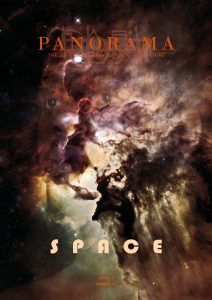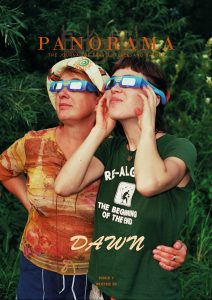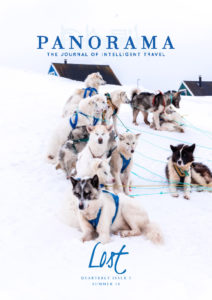Imagine visiting home after three years with a new perception of, and feeling for, your homeland. I’ll take you on a tour of Vietnam to show you not just its biodiverse beauty but also the threats facing it and its fast disappearance. There’ll be pain and joy, loss and recovery.
1
I left home at 16 to study abroad in England and used to take a three-month trip back to visit family and friends every summer. Yet in November 2022 I wasn’t just excited to see relatives. There was something else I had longed to discover, something that had occupied my mind ever since I started my PhD on climate fiction and environmental issues. For the three years that I couldn’t go home because of COVID-19, I kept asking myself what was left of the wealth of plant and animal species in one of the most biodiverse countries in the world—my homeland—Vietnam. I wanted to find the answer, to see it for myself, for the first time.
2
For a while, I was convinced that Hanoi, the bustling, beloved city in which I grew up and lived for sixteen years, had been deprived of animals by its rapid economic growth, population increase, and urbanisation. In my early memories, our house was frequented by a host of beautiful creatures—dragonflies, butterflies, longhorn beetles, stink bugs, flying ants—but I don’t recall seeing any less than a decade later, save cockroaches, mosquitoes, and common house geckos. But was I right about the disappearance of animals in Hanoi? Half.
Reading the climate fiction of American writer Jeff VanderMeer, I was inspired to slow down and listen to the world, to be attuned to my surroundings so as to notice ‘life out there in the blackness’. His work made me become aware of things I did not know before, made me love what I had before found scary and alienating: I have learnt to love the scary and the alienating. He has shown me that if we pay attention and open ourselves to what the Earth has given us, we will uncover its wonder and beauty, its richness and complexity imbued with meaning and stories. VanderMeer was right, and I was in awe of what I discovered amidst the incessant flow of people, traffic…and air pollution.
I peered at the bushes, the evergreen trees whose name I knew not but would love to, at the lampposts, traffic lights, electricity poles, cables, pavements, and my neighbours’ plants. And there, right in front of me, tiny birds the size of a thumb flew from branch to branch. Brownish insects flitted from leaf to leaf. Sparrows gathered on the streets to eat corn and rice husks. A female nightingale hopped around on my neighbours’ balcony. Colourful butterflies and dragonflies here and there darting through the heavy traffic (though none had yet visited my house like they used to). One evening, in the middle of Sword Lake, a bat manoeuvred and rowed through the air, movements so fast and mesmerising that for a moment I was lost in surprise and in its beauty.
As I watched these precious beings, I couldn’t help but wonder whether they were doing alright, whether they were safe, and how many of them were out there. I worry about their futures, but I was also surprised to have found animals I had never seen before in Hanoi. It prompted me to ask whether they had always been here and, had I looked more carefully in the past, had I paid more attention, been more interested in their lives and existence, whether I would have seen them. Maybe. But there was one thing I knew for sure: the simple act of observation makes all the difference. I found, as VanderMeer would put it, the ‘species already there’. That I did not see those animals until now does not mean that they did not exist—it means that my purview is limited, that my brain cannot think about many different things at once so that when the states of our ecosystems were none of my concern it ignored them. And when I started to care, they started to haunt, filling up every corner of my mind.
3
I found joy and elation in those rare moments of discovery, of seeing lives I had longed to find. But not everyone felt that way—certainly, not those close to me. I remember cutting them off mid-sentence to point out some tiny birds on a branch, excitedly telling them about my sighting of a nightingale and them showing not much interest. I remember talking about my overnight camping trip in the primary forest of Cuc Phuong national park and them feeling puzzled at why I would do such a thing.
British eco-philosopher Timothy Morton once wrote that one can’t impose one’s experience of beauty onto anyone else because beauty is kitsch—it depends on different perspectives, different tastes—such that one can only share the experience. Morton is right. But I still felt sad—sad at the thought that they didn’t marvel at the wonder and surprises this corner of the Earth has offered them. Sad that this lack of care, of attention, this dismissal, would soon cause those precious beings to vanish, an ongoing problem across the country for more than a decade. The number of species that have become critically endangered in Vietnam is disheartening, and my heart broke for those who have already gone extinct, those that the next generation and I will never have the chance to encounter.
During my short stay in Vietnam, my family and I went to Phu Quoc island located in the Gulf of Thailand, a place to which I had been when I was about seven. I don’t remember much of what I did but one thing was memorable: the place had not yet felt the influence of humans and there weren’t many people about. 18 years on, things have drastically changed. Everywhere I went was packed with tourists. It was winter at the time, and I heard that the island would be even more crowded in the summer. Primary forests and coral reefs made way for countless holiday resorts, upmarket shopping centres, fancy apartments and hotels, and massive leisure parks. They sprang up like mushrooms, appearing along coastal paths, on every road we had been, and far into the horizon. Some completed and many more in various stages of construction. While some of the island’s wildlife habitats are still relatively undisturbed, I’m not so sure about their near futures, having witnessed the rate and scale of development. The nonhumans that were lost, plants and animals alike that took millions of years to evolve, adapt, and made this place their home, could never be brought back, were gone forever.
Yet the signs that I’ve seen, the places like those that I’ve mentioned, mean that life for the human inhabitants is better than before. They offer employment and income—a livelihood and a brighter future. Some have lived a hard life for such a long time—the region was poor—many still are. Who am I, or anyone, to tell them to save the trees, the birds, the primates, the insects, when they have only now experienced the good life, when some needs to put food on the table? In The Old Man Hac (1943), Vietnamese writer Nam Cao describes a woman who could never forget about her chronic leg pain and care about anything else: ‘When one has already suffered so much, one cannot think of anyone else. One’s good characters have been overshadowed by selfish worries and sorrow’.
As ice sheets melt and sea level rises, encroaching upon rice fields, as floods become more frequent and stronger due to deforestation, damaging infrastructure and livelihoods, life will however get harder again, particularly for those living in Southern Vietnam. Things might be looking up now, but unsustainable development and short-term economic gains cannot and will not last. Sparing no one, global warming will cause more death, more displacement, more ruination on its path. I do not want this to happen to my people and, by people, I mean as well my nonhuman kins. We need alternatives, we need different ways of living with the more-than-human, those that create a sustainable and mutually thriving coexistence.
4
There was sadness on that holiday to Phu Quoc island, there was disappointment and anger, and I had to bottle those feelings up because no one around me would understand. I found no solace —yet there were rare instances of happiness and calm.
Wherever we went, a beach, a water park, a temple, a garden in front of the entrance to Tranh waterfall, I would wander off by myself for a short while, following the twittering and whistling sounds of chatty songbirds to catch a glimpse of them yet also making sure to keep a respectful distance so as not to frighten them. Often, I could only hear their voices, high-pitched and melodious, coming and going, harmonious; the birds themselves hidden in the thick canopy of tropical trees, playing hide-and-seek. On my walk around the temple located on a mountain looking out to the beautiful, calm blue sea, I encountered a bronze grass skink scuttering about the ground—its scaly back a luminescent mossy green under the bright sunlight. On my stroll around the garden filled with exotic plants and songbirds, I encountered an oriental garden lizard that just suddenly appeared in front of me, chilling on a large green leaf for how long I knew not. On my way to the waterfall to which I had to do a short trek through a damp, muggy forest, several spotted forest skinks accompanied me, rushing here and there, making rustling noise through heaps of dead leaves.
My heart was full as I wallowed in their presence, observing them, appreciating them, and cherishing every second of it. I want to return to those places again and again, to the wet and humid air, the unique tropical sounds of myriad birds and insects, the thick, pungent smell of vegetation, moisture, decaying plants and wood.
*****
Nothing, so far, has beat my experience of the overnight camping trip in Cuc Phuong, Vietnam’s first national park and largest nature reserve. I had never been camping before that point. I was nervous, but was also incredibly excited. Ever since I involved myself in environmental issues, I have always fantasised about being a biologist or a conservationist trudging through a dense tropical rainforest to study plants and animals, getting all muddy and sweaty. I took on that mindset and attitude as I made my way deep into the core of the primary forest at Cuc Phuong with my husband and two guides—Tuan is a park ranger and Lang is a local guide from the Muong minority.
They told me a great deal about the forest, the local names of the trees and plants, what they were good for, many having desirable timber qualities and medicinal properties, such that they had been illegally logged and now left endangered. One particular kind of tree, according to Lang, produces seeds that, when you open them up and rub them on your boots, will deter jawed land leeches from climbing up your body because of their bitter taste. Yellow camellia is found here and would make a lovely pot of aromatic tea, and dracontomelon covers the forest floor and is often used in fish broth by the locals. Scattered around and especially in the cracks between jagged rocks were also dozens of the mountain snails that are a local delicacy.
After about two hours of trekking, we arrived at a natural clearing. Tuan and Lang decided to put up our camp there for the night. They chopped down a few banana leaves and some massive, two-meter long ones from a species of cycad endemic to central Vietnam (cycas hoabinhensis). These would be our mats and the bedding under our tent. Before sunset, Lang used the bamboo cutting he had gathered earlier on our trek to make chopsticks and collect spring water from the mountain streams—the water would be used for making tea and cooking rice. Standing in the heart of the forest and being provided by it with shelter, a bed, essential tools, and a vital source of sustenance, I felt viscerally my interconnection with nonhuman worlds, my entanglement with, dependence on, appreciation of, and deep respect for, them and what they do. The Earth gives and gives so much to humanity, and most of us take and take from it with so little gratitude. I felt small and humble. I felt the urge to merge into the denseness of the trees and become one of them—wishful thinking.
While Tuan collected dry wood to start a fire and prepared for dinner, Lang took my husband and me to see a thousand-year-old tree. On the way, he pointed out the names of other plants to us. I asked how he remembered them all and whether he knew most of the species that inhabited this place. Lang said yes—the knowledge was passed down to him by his parents as he followed them to the forest when he was younger. His family used to live in this forest before they were moved elsewhere as the place became a national park. I had conflicted feelings about this. For thousands of years, Muong people had made Ninh Binh province their home, where the park is located, only to be displaced as a result of conservation. But at the same time, I learned from Tuan over dinner that Muong people had in the past cleared precious trees and captured wild animals for food, wood, and medicines, gradually damaging the ecosystem. Things had got better now though, he said, with tighter regulations, governmental subsidies and education to support and raise awareness amongst ethnic minorities, and with people like him going into the forest every day to safeguard it from illegal loggers and poachers. Deep down, I hope all this is true…that things are getting better for both the human and the nonhuman.
On our way back to the campsite, the sun started to set, and under the thick canopy, it was getting dark quickly. Only a few rays of light made their way to the forest floor, enough to spot squirrels. Lang told us that at this time of the day, about five or six in the afternoon, they came out for food so if we were quiet…and lucky…we would be able to see them. At first, I could only hear their calls—echoed through the forest—loud, almost deafening as they chirped and barked. Then, we spotted movement amongst the branches. Then, there they were—two Black Giant squirrels—hopping from tree to tree, munching on young leaves. Lang taught us how to identify them, their underparts a light buff colour, unlike the Pallas’s squirrel which has a red belly. He said that Cuc Phuong was also home to Indian Giant Flying squirrels, but that evening, we could only see the Black Giant ones. And that was more than enough for me.
After dinner, with our torches on for the then pitch-dark forest, the three of us headed off once more for the night spotting to which I had looked forwards the whole day. Lang hoped that we would be able to spot slow lorises, and one way of doing so is to shine torches up the trees and if they were there, their eyes would reflect the light. Trying to make sure not to trip over any vines, to slip over any rocks or branches, while also peering into the thickness of the night, up and down, we saw mountain crabs, massive spiders, what looked like a bent-toed gecko from my memory standing stationary on a tree chunk, small frogs with calls vibrating across the forest, mixed with the sounds of insects that together created a cacophony of noise. Still no slow lorises, but what would stay with me forever and what was so special was the moment I smelled a whiff of a civet’s territorial marker against a large, jagged rock. The smell was so fresh and strong that the civet must have been there not long ago, and even though I didn’t see it, knowing that it was just here, probably close, was such a surreal feeling. I felt like a biologist.
5
A lot of plant and animals species in Vietnam have become endangered in the last decade, and some have already gone extinct. Urbanisation there is happening fast, with more infrastructure being built, more farmland replacing primary forest every day. Yet, for me, even one single lifeform is worth saving, worth nurturing and cherishing; for me, every single individual is precious and important, such that there’s still a lot to be protected and conserved. Nonhuman worlds would be fine without us being here but we are not fine without them being here. The air we breathe, the water we drink, the food we eat, the house we live in are all possible because of our biological and social entanglements with the more-than-human. And before too late, we need to re-cognise these intricate interconnections.
I have tried to talk about climate change to those I can, those that are close to me, and haven’t been too successful. As Morton says, I cannot force the experience of beauty on anyone; I can only share it so share it I do—I’ll keep on trying, keep on showing them and others the beauty and wonders of the Earth, its greatness, our generous and kind provider and saviour, yet also one of the biggest threats facing humanity in the 21st century. There are people who have inspired me to be on the right path—and I want to be like them, doing what is right—and I know that I’m not alone. ‘Never alone’.











